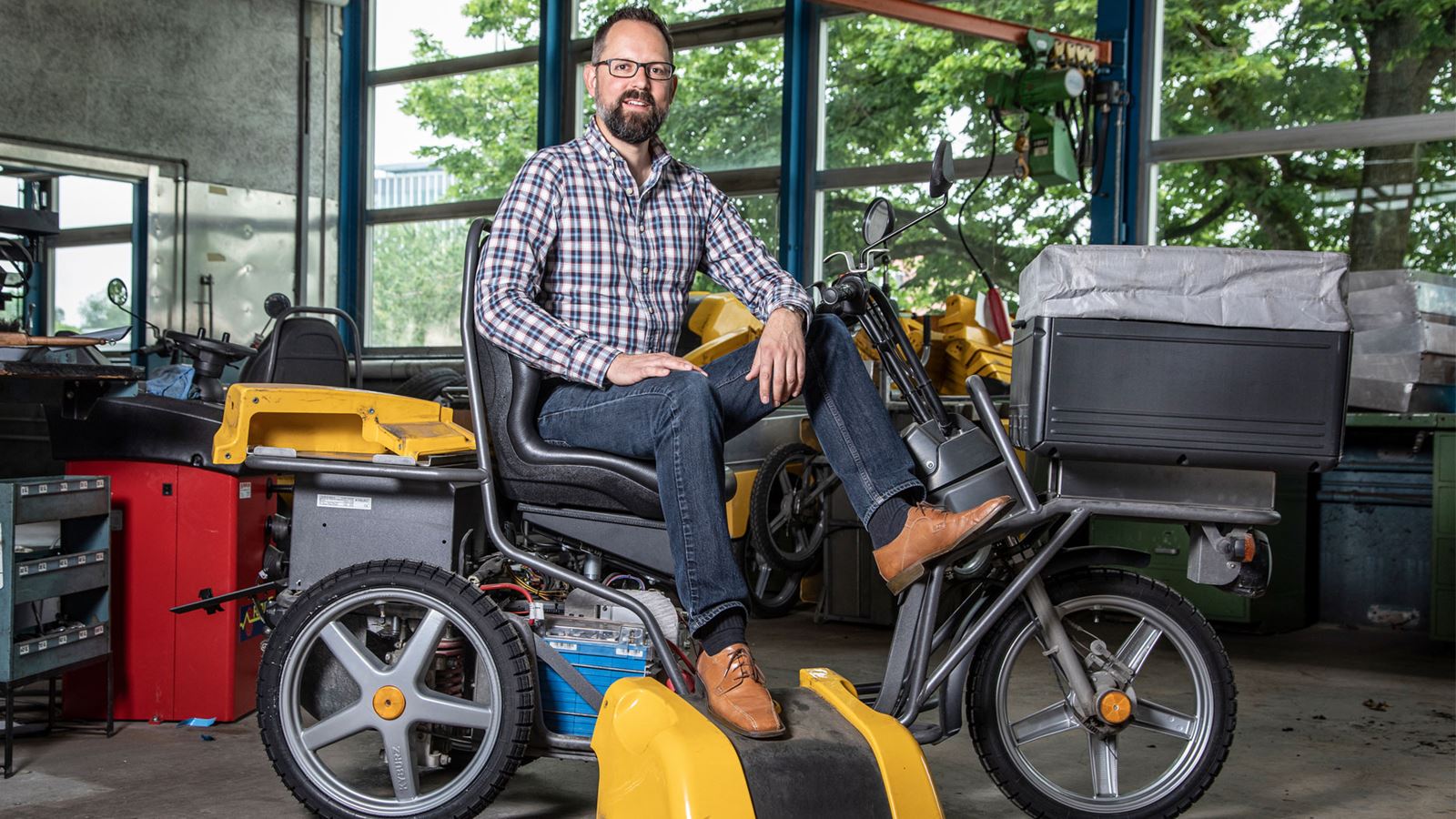Innovation & technology, Blog
E-mobility: the pioneer
Renato Ercolani recalls the difficulties encountered in rolling out Swiss Post’s electric scooters.
Rich Content Section

Renato Ercolani was closely involved as the DX seniors’ vehicle made by Kyburz matured into a production-ready, Swiss Post delivery vehicle. “We were the first in the world to introduce three-wheeled electric scooters on such a scale”, explains the 40-year old. We had a large number of questions to answer concerning batteries, range and accessories, and the power supply in certain buildings had to be completely modernized. And what’s more: “Despite being well prepared, there were still some teething issues”, he says.
The battery performance was designed for a lot of stop-and-go traffic, full loads and long trips. “But then came winter”. The low temperatures and difficult road conditions had a negative impact on range. This led to some scooters coming to a standstill before the end of the round. Some axles also broke and wheels were lost. The electric scooters have triple the loading capacity as decommissioned petrol-powered variants. This in addition to the hard work required on a day of postal delivery leads to a lot of strain on the vehicles.
There were even a few fires while charging the batteries at night, which fortunately ran their course with little damage. “We learned from these issues and worked together with the manufacturer to undertake a range of technical improvements.” Today, the electric scooters are popular amongst employees thanks most of all to their safety and good ergonomics.
Did you know?
A second lease of life for Swiss Post scooter batteries. After approximately seven years, their batteries still have a storage capacity of almost 80 percent – not enough to continue using them in mail delivery, but more than enough for use in a stationary energy storage unit for solar electricity.


